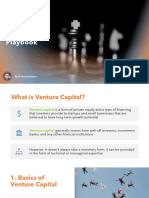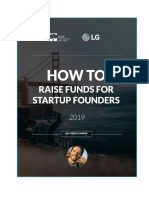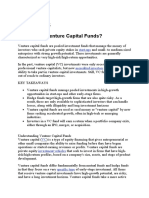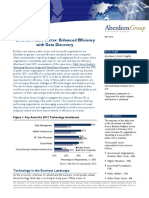0% found this document useful (0 votes)
10 views23 pagesUnit 4 Funding - II
The document outlines the essential steps for startup fundraising, including assessing funding needs, investment readiness, and preparing a pitch deck. It highlights what investors look for in startups, such as revenue growth, market position, and scalability, as well as the importance of targeting the right investors and conducting due diligence. Finally, it explains the term sheet's role in summarizing the deal's major points, including valuation, investment structure, and management structure.
Uploaded by
Gauttam JyotiCopyright
© © All Rights Reserved
We take content rights seriously. If you suspect this is your content, claim it here.
Available Formats
Download as PPTX, PDF, TXT or read online on Scribd
0% found this document useful (0 votes)
10 views23 pagesUnit 4 Funding - II
The document outlines the essential steps for startup fundraising, including assessing funding needs, investment readiness, and preparing a pitch deck. It highlights what investors look for in startups, such as revenue growth, market position, and scalability, as well as the importance of targeting the right investors and conducting due diligence. Finally, it explains the term sheet's role in summarizing the deal's major points, including valuation, investment structure, and management structure.
Uploaded by
Gauttam JyotiCopyright
© © All Rights Reserved
We take content rights seriously. If you suspect this is your content, claim it here.
Available Formats
Download as PPTX, PDF, TXT or read online on Scribd
/ 23
























































































